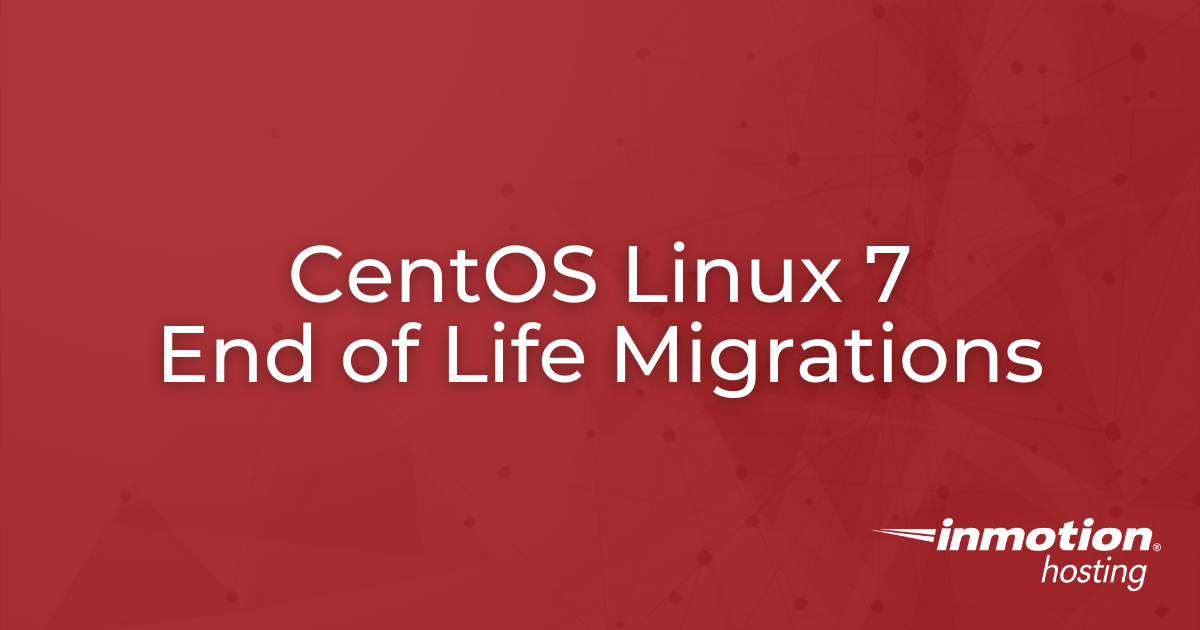CentOS Linux 7 End of Life Migrations

CentOS 7 is approaching its End of Life (EOL), meaning that after June 30th, the creators of CentOS will no longer provide updates or support for this version. It will still be available and will not cease functioning on that date, but any security threats or software issues that arise will no longer be patched. This means that systems which continue to use CentOS 7 may eventually become vulnerable.
What Does This Mean and What Do You Need to Do?
First, don’t panic! No immediate action is required. EOL, or End-of-Life, simply means that a product will no longer receive support, updates, or patches from its creators. For software users, this means that any security or software issues will remain unaddressed.
How Does the CentOS EOL Affect You?
If your server currently runs on CentOS 7, the upcoming EOL date means that you will no longer receive security and update patches from the upstream repositories starting June 30th. End-of-life (EOL) software will gradually become less stable, secure, and feature-rich compared to updated software. However, this decline doesn’t happen immediately. Careful planning of the migration process will lead to a significantly better experience. To ensure the continued security and stability of your server, it is recommended that you update your operating system or migrate your site to a new server as soon as possible.
If you are a cPanel user once the EOL goes into effect your cPanel license will update to an Extended Lifecycle License and you will continue to get security updates provided by cPanel. This is a short term solution that is put into place by cPanel with a partnership with TuxCare.
Options for CentOS 7 Users
If you are an InMotion Hosting customer using CentOS 7, we are ready to assist you in transitioning to a new server or updating your current server. You have three primary options for upgrading to a newer operating system:
Additionally, we are currently testing an upgrade tool designed to facilitate in-place upgrades for dedicated servers without requiring a move to a new server. We will notify affected customers via email once we are ready to start this process and schedule a convenient time to complete the upgrade.
How to Prepare for the Transition
Ensuring a smooth transition to a new operating system requires careful preparation of your current server and website. Below is a step-by-step guide to help you prepare before moving your site or updating your server:
1. Ensure You Have a Valid Backup
Maintaining a valid backup of your website is crucial, especially during major updates or server migrations. A backup ensures that you can restore your website in case anything goes wrong during the transition. Verify that your backup is current and easily restorable. If you are on a cPanel server be sure to check out our article on how to create cPanel backups.
2. Update Your Site’s Software
Make sure that all the software your site relies on is up-to-date. This includes running the latest versions of PHP and MySQL to ensure compatibility with your new server. Updating your site’s software on the current server before the transition can prevent compatibility issues post-migration.
3. Prepare a Post-Update Test Plan
Develop a comprehensive testing plan with your team to ensure your site functions correctly after the upgrade is completed. Testing is crucial to identify and fix any issues or bugs that may arise from the changes to your site or its environment, thereby minimizing any downtime or potential problems.


